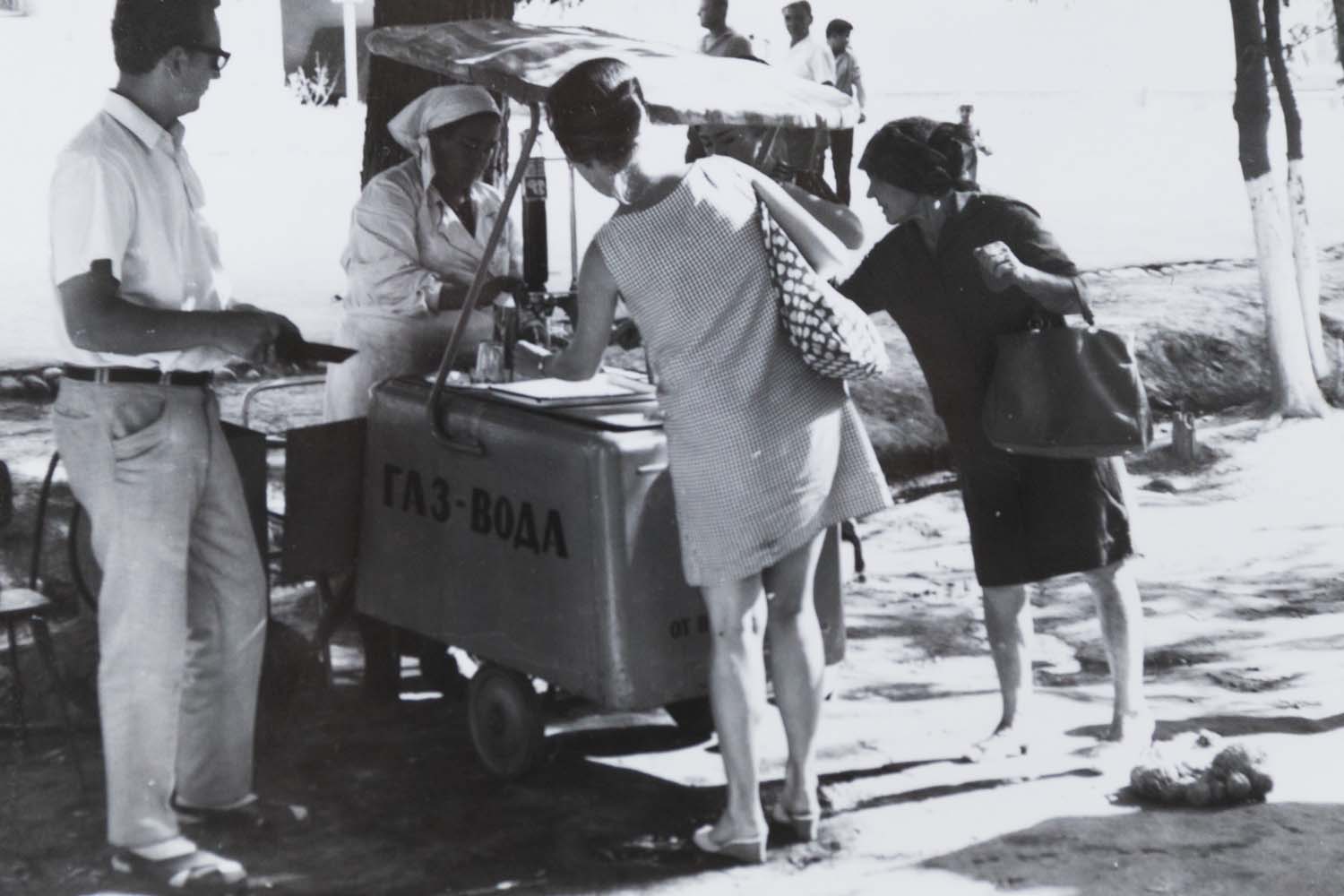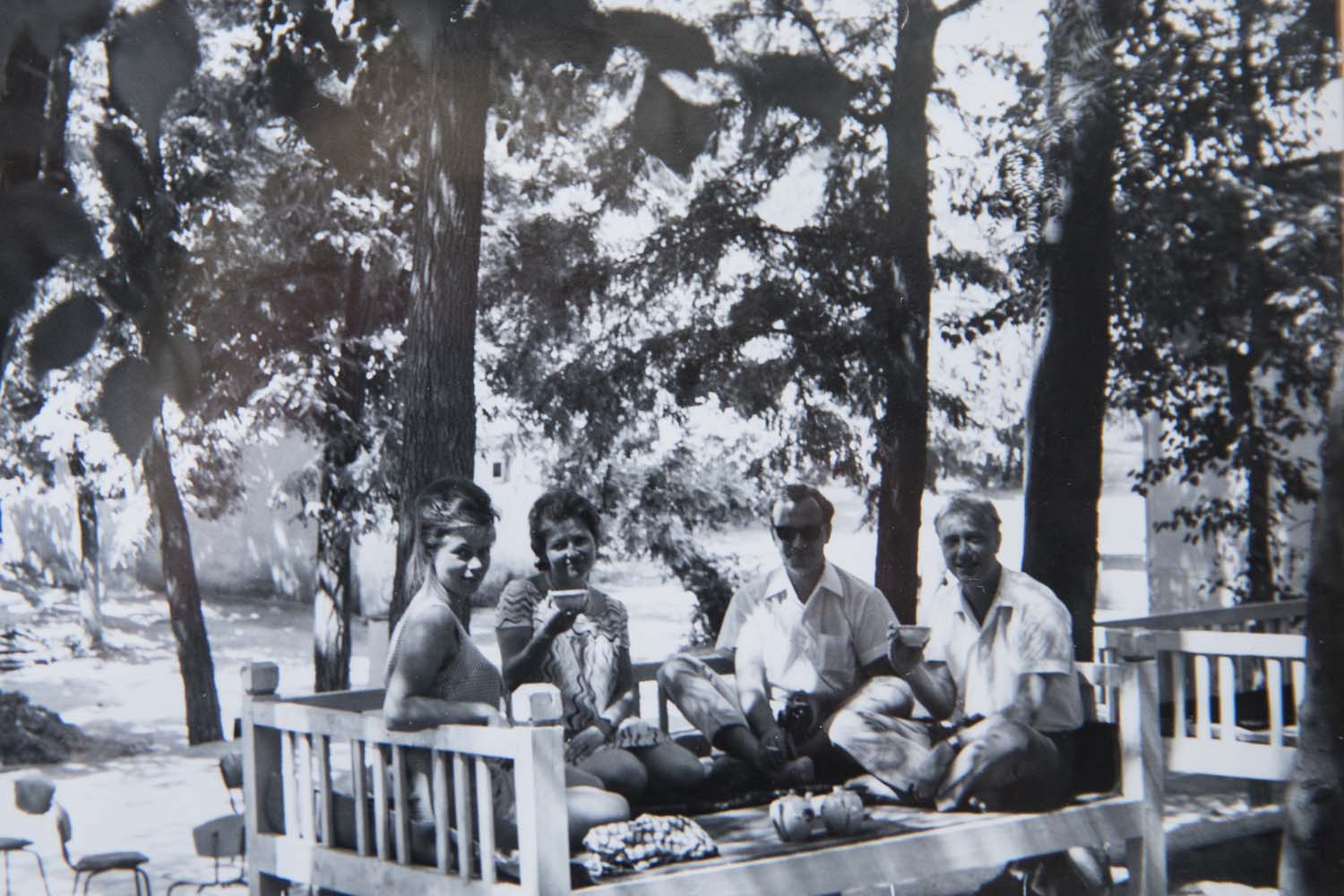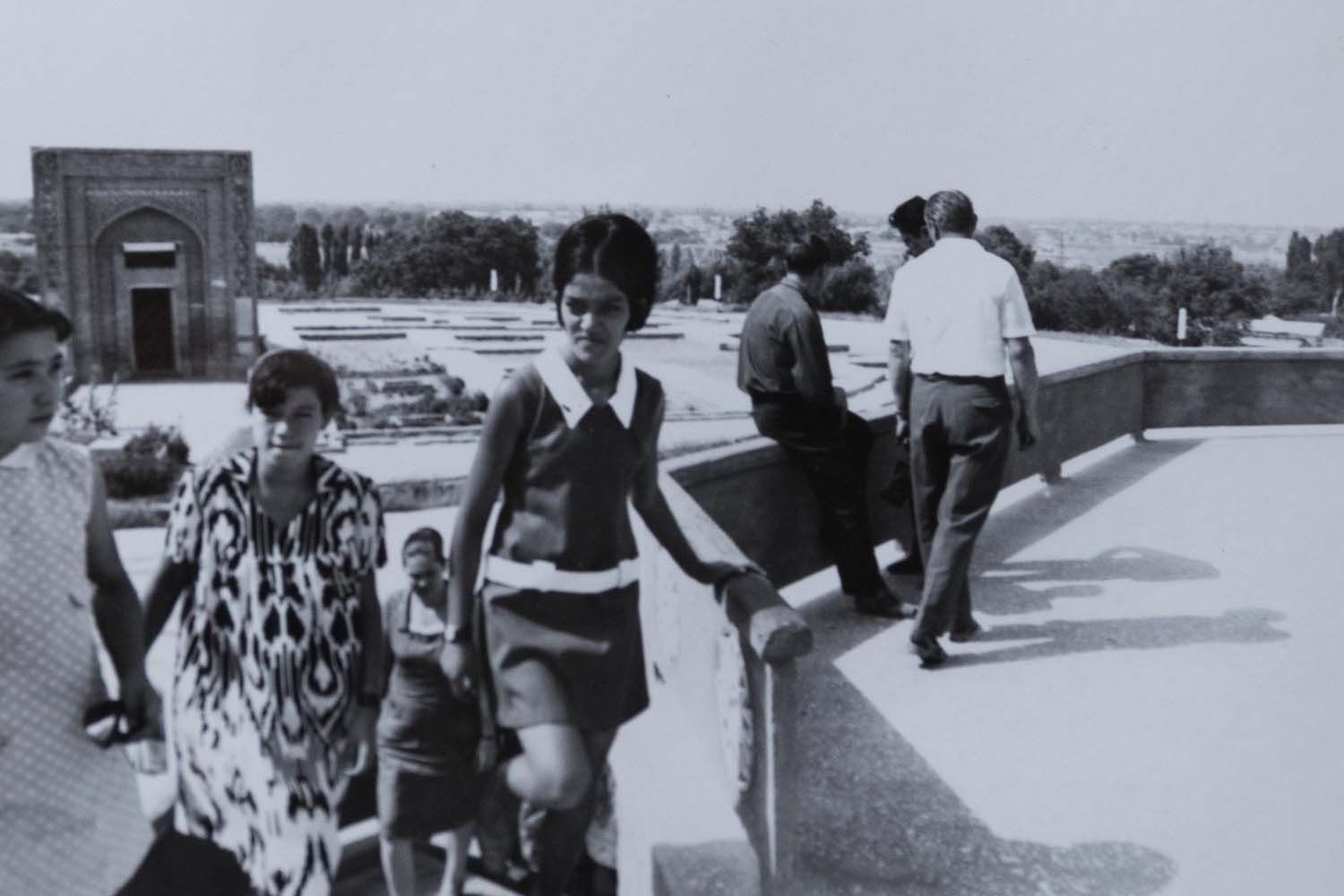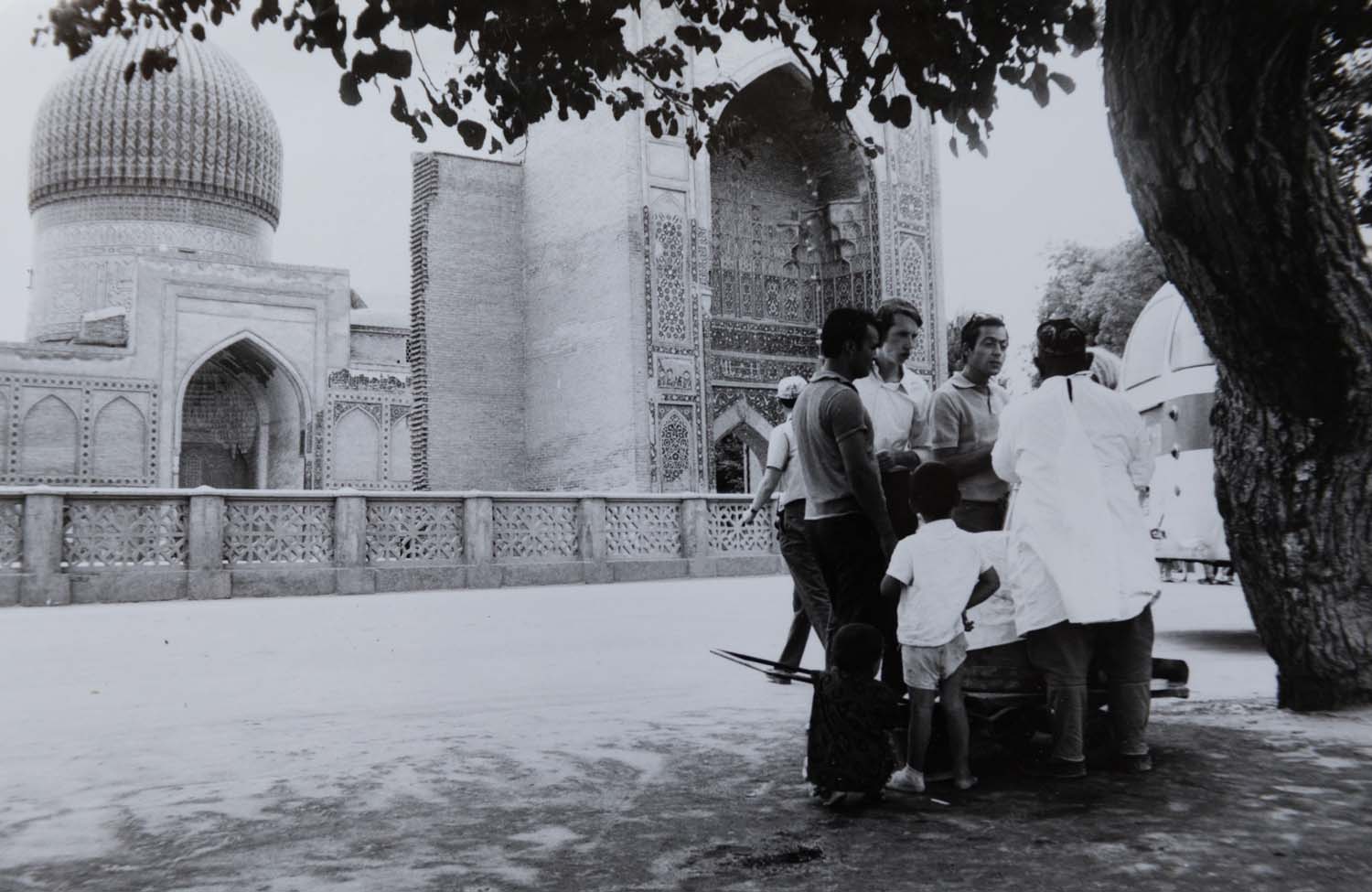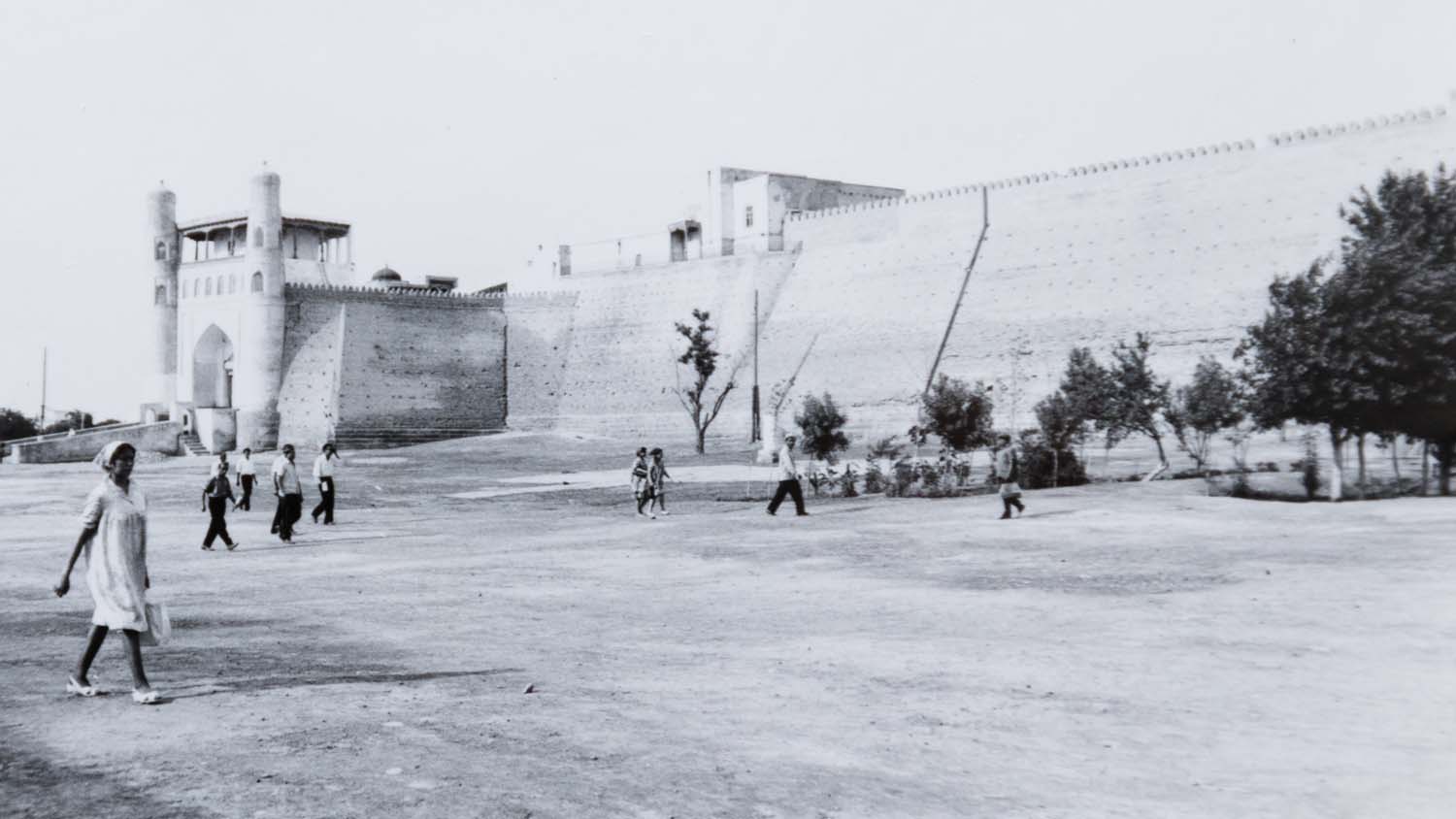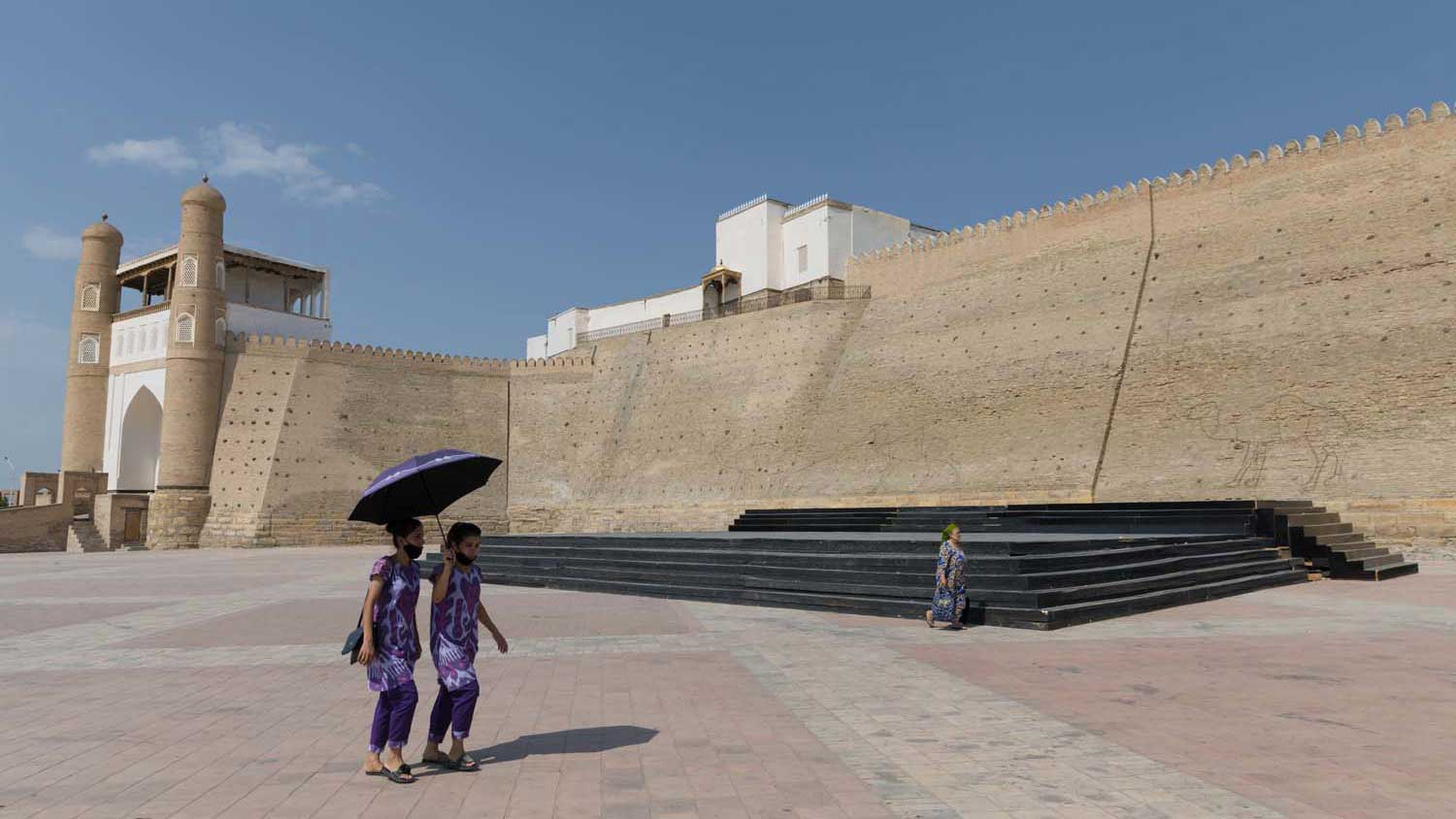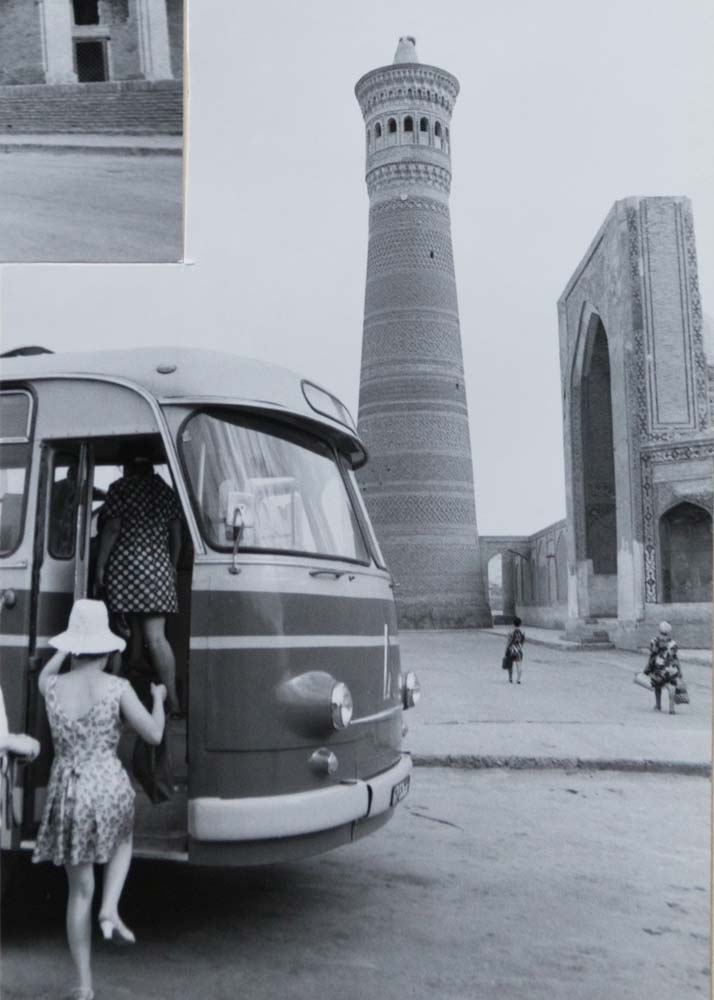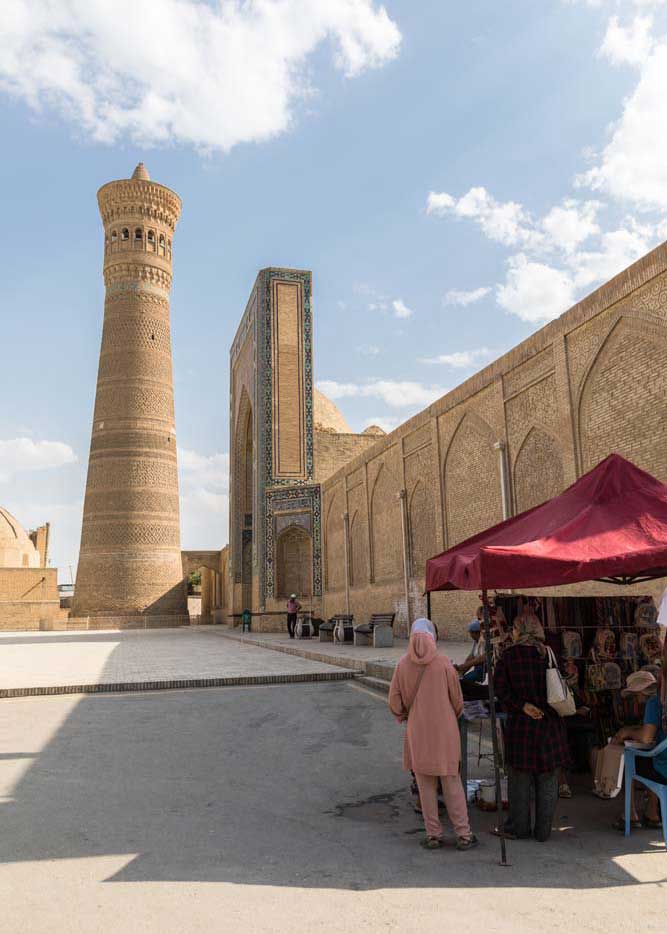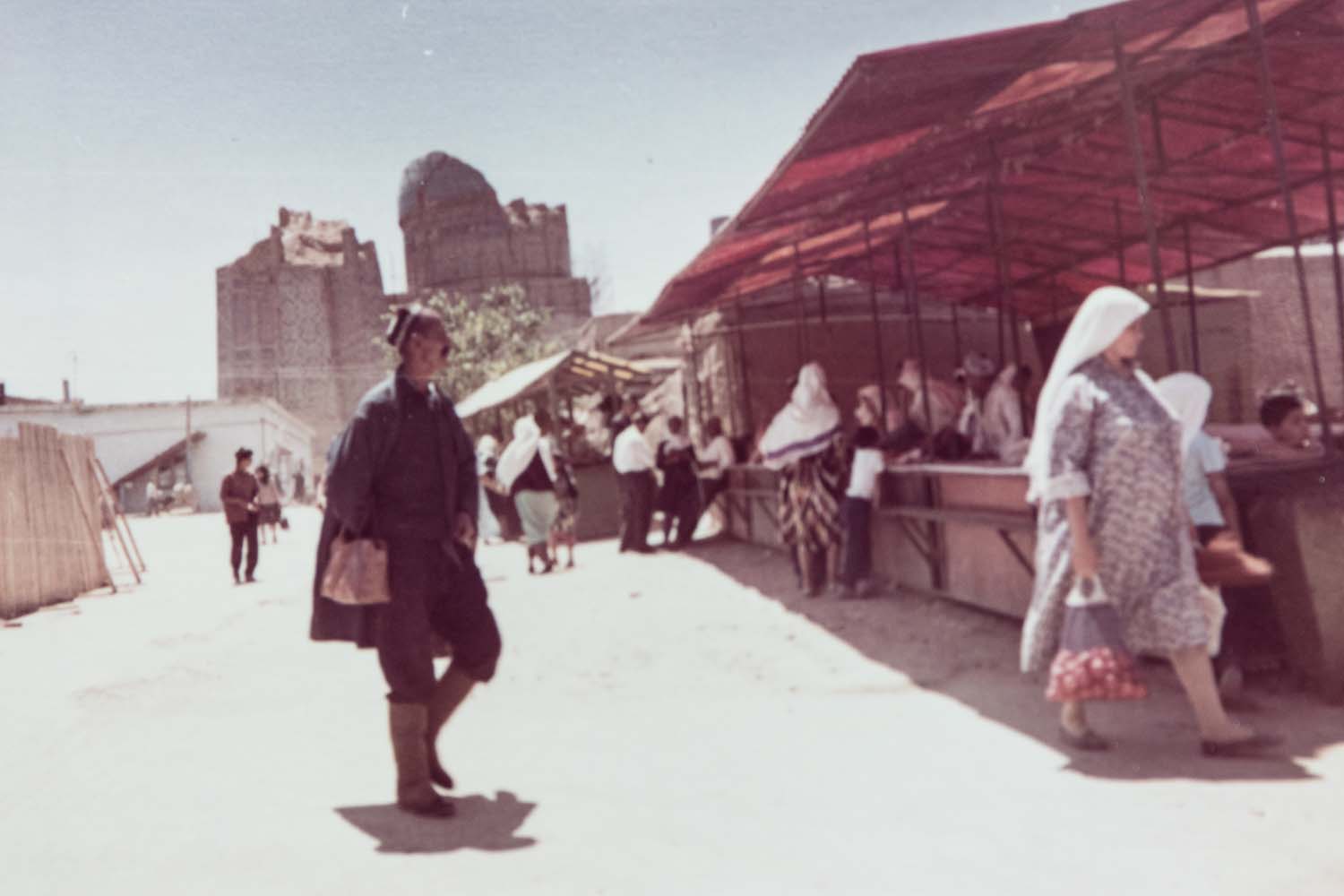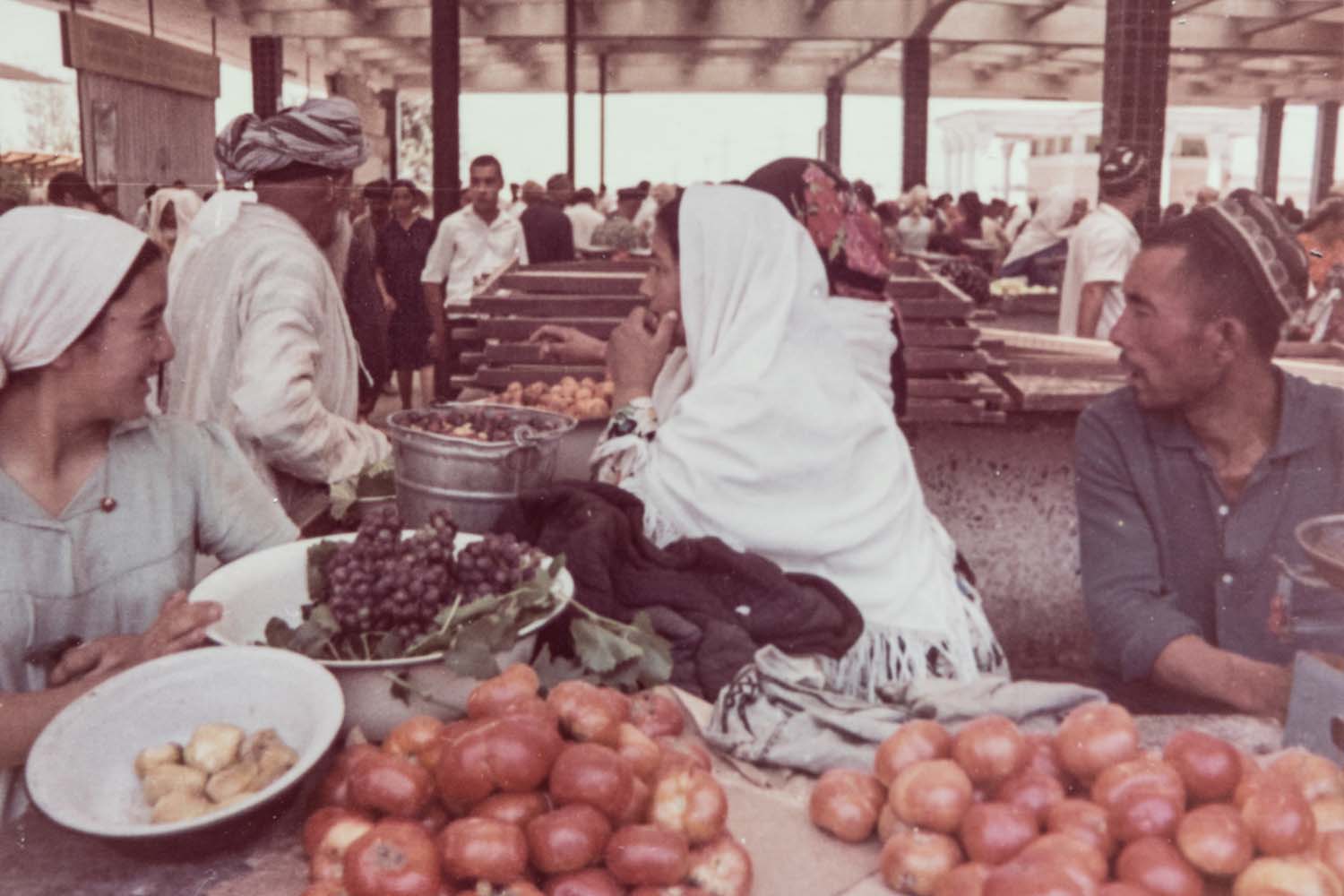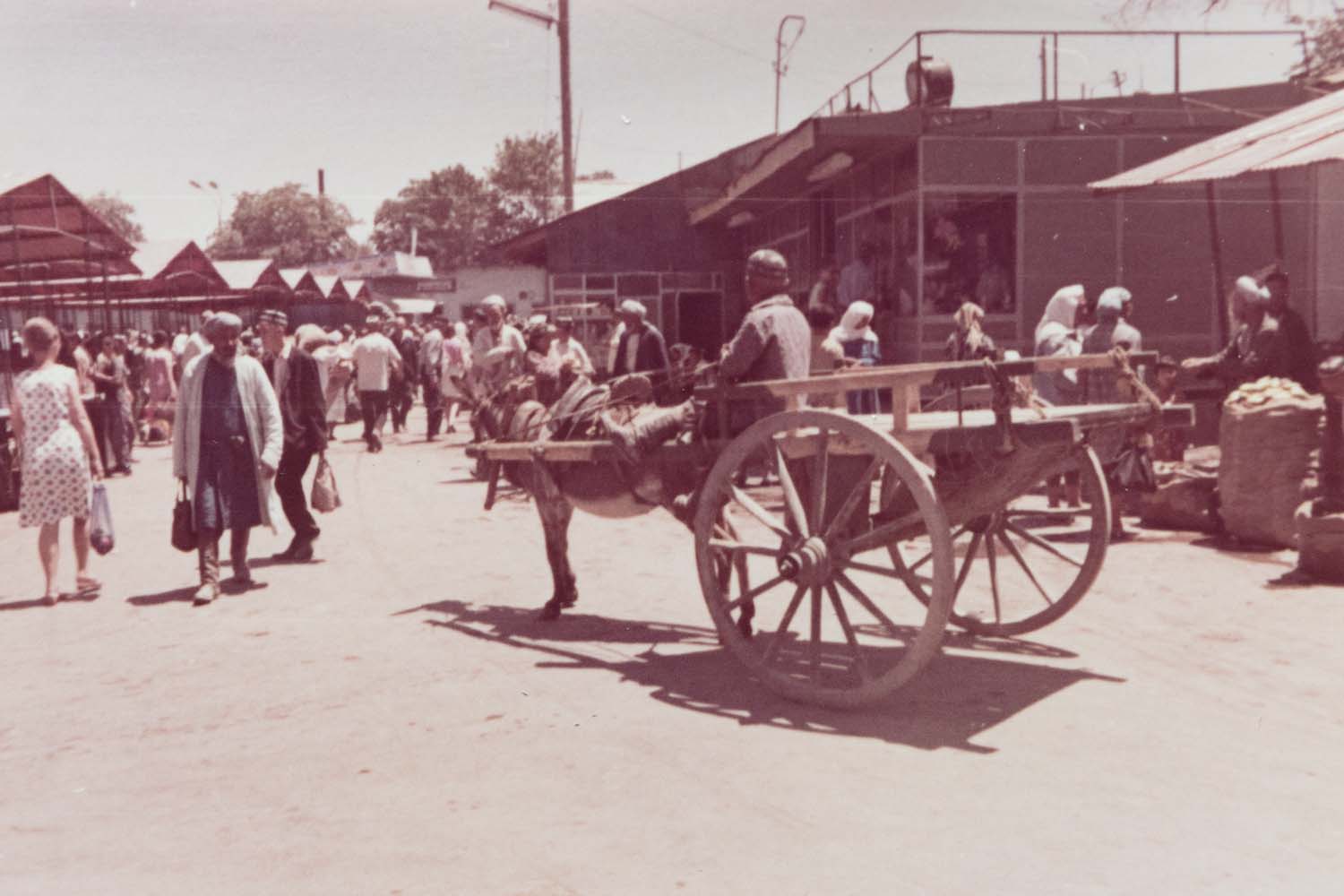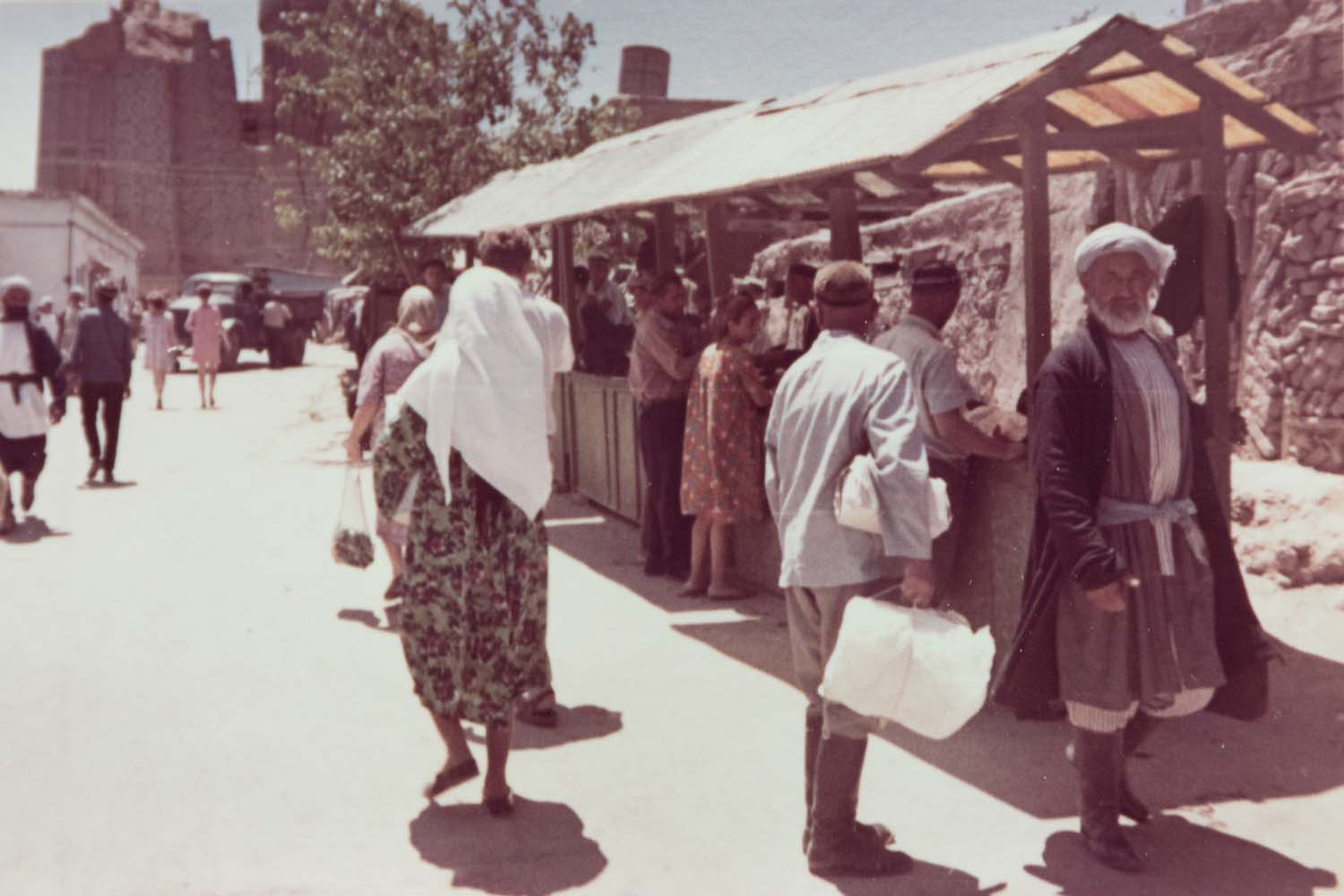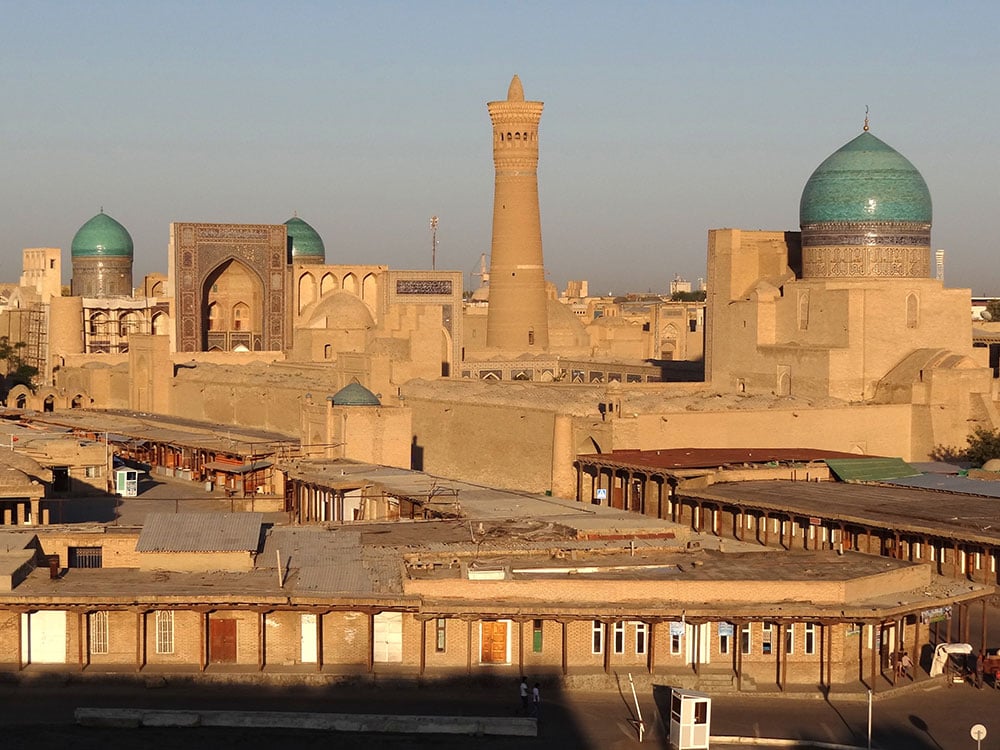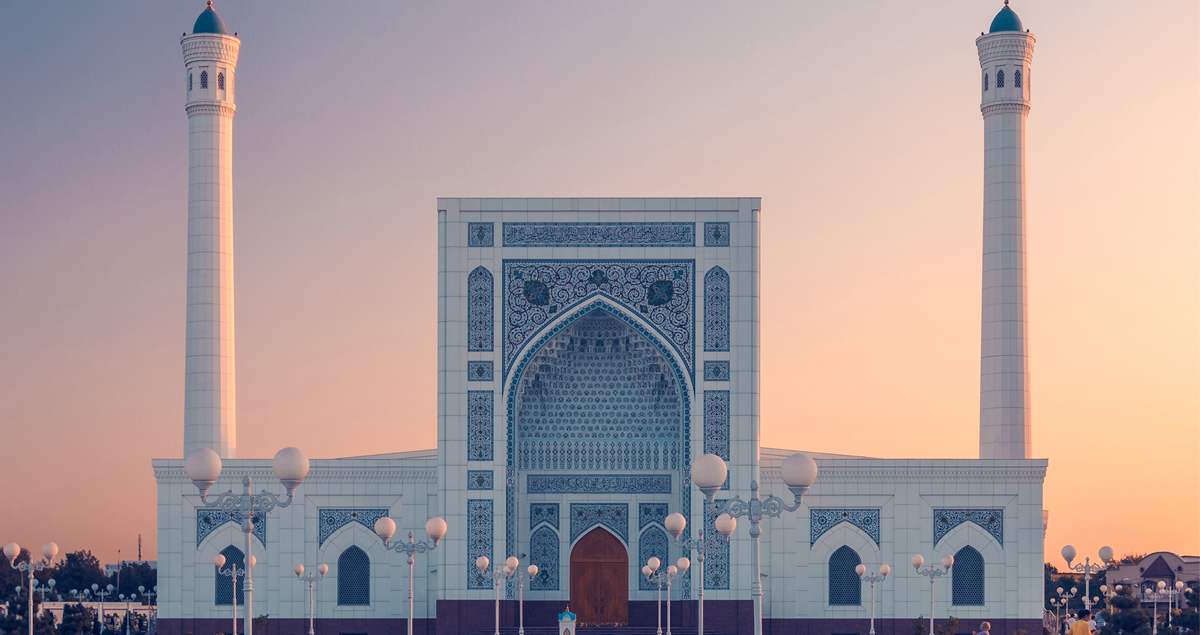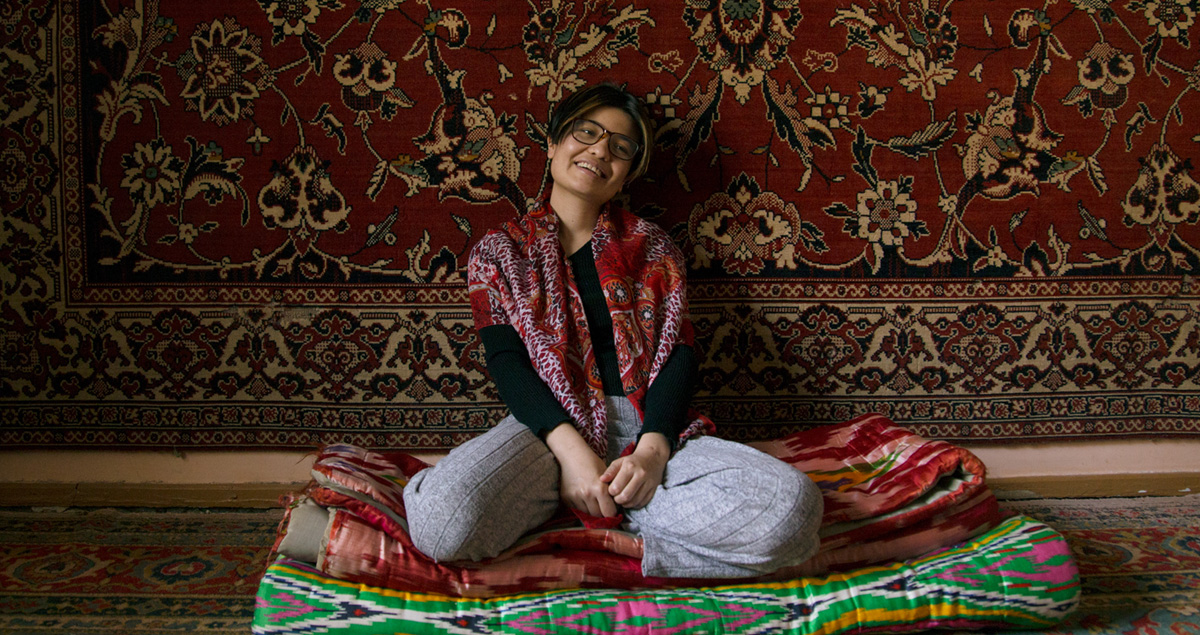Uzbekistan, 50 years ago: unearthing an East German family’s travel photos
In the summer of 1971, a young German couple set off on a trip that would take them farther from home than any of their journeys before. They travelled to Uzbekistan, more than 5,000 kilometres east of Germany. One of the black-and-white photos from their adventure shows them both in their early 30s, standing in front of the Bibi-Khanym Mosque in Samarkand, smiling. The photo was taken a year before I was born. The couple went on to become my parents.
My parents
“I never wanted to own a house. Instead, I told my husband I wanted to travel, to see the world,” my mother, now 80-years old, shared with me. When I asked what inspired the trip, she explained: “Tashkent, Samarkand, and Bukhara, all that sounded like they were straight out of One Thousand and One Nights and seemed unattainable to us. I have always been fascinated by Persian scientists like Avicenna, whom I had read about — what knowledge in mathematics and physics they already had. To think that 1,000 years ago they constructed telescopes!”
The photograph is part of an album that I rediscovered recently. My father, who passed away six years ago, had been a passionate photographer. For as long as I can remember, he took his camera on all his travels, documenting family holidays, but also chronicling the everyday life of the respective destinations.
The photos are special to me not just because they reveal a glimpse of my parents’ life before me, but also because coincidentally the region which they travelled to has been my second home for the last 16 years. Since 2005, I’ve been living in Kazakhstan and have travelled to Uzbekistan numerous times. I initially came here to learn Russian — and then stayed, becoming a professional reporter in Central Asia. During the last 16 years, I have witnessed many political changes in Uzbekistan and covered various stories for German media. My own journey to Uzbekistan has been bumpy to say the least.
It’s such a rich, beautiful country; people are — as everywhere in Central Asia — open, interested in others, and generous. But as long as I’ve known it, Uzbekistan has been an authoritarian state, and local authorities don’t look kindly on journalists. I witnessed the brutal regime of Uzbekistan’s first elected president, Islam Karimov, who ruled the country from its independence in 1991, until he died in 2016. Although the current president Shavkat Mirziyoyev adopted a new tone after his election in 2016, returning freedom to long-time political prisoners, including journalists, the repression of journalists and bloggers continues today. On all my research trips to Uzbekistan — including the one I just came back from — I have felt uncomfortable, watched over, controlled, and have been urged by authorities to report “positively” about the country. During the past two or three years, the pressure on the media has only increased. In 2016, I travelled to Uzbekistan to report on the atmosphere of change that had gripped the country, and was expelled for travelling on a tourist visa (accreditation was simply not issued at the time). I was allowed to re-enter the country after three years.
On my return, I was curious about the Uzbekistan my parents witnessed in the 1970s. So, exactly 50 years after their trip, I decided to trace their footsteps, inspired by the photographs and memories of the journey.
That summer in 1971, my parents had rented their first apartment, moving with my nine-year-old sister to a village in Saxony. Both worked as civil engineers, constructing brown coal power plants in East Germany. Instead of building their own home, they took a less traditional route. While the German Democratic Republic (East Germany) wasn’t famous for holidays abroad, it was common for citizens to travel to the Soviet Union and the other countries behind the Iron Curtain. My parents took every opportunity to visit the parts of the world they were allowed to.
Before then, they had already been to Hungary, Bulgaria, Czechoslovakia, and the Black Sea coast in today’s Ukraine and Georgia, then belonging to the Soviet Union. But in 1971 they wanted to go a little further afield.
They had heard of a group trip to “Middle Asia”, as today’s Central Asia was called in the GDR. They registered with the state-owned “Reisebüro der DDR”, the only travel agency that existed at that time, and waited for confirmation.
The Mir-i Arab Madrasa, Bukhara, in 1971
The Mir-i Arab Madrasa, Bukhara, in 2021
Back in the 70s, my parents didn’t own a television, there was no access to travel documentaries or glossy catalogues. Dreamy Instagram content and travel blogs seemed unimaginable. Travel was the only way you could experience distant cultures with your own eyes. “The world was so much bigger than today,” my mother says in retrospect. Any image of Uzbekistan they had before the trip came from their imagination, inspired by books and stories of the ancient Silk Road.
They had not expected to see the enormous concrete buildings that emerged in the Soviet period. This had, initially, disappointed my mother about Tashkent, the capital of the Uzbek Soviet Socialist Republic. “It looked like an everyday modern city, with apartment blocks and cars lining the streets!” she told me, still slightly appalled by the fact there were practically no ancient buildings in the centre of the capital.
Tashkent after the 1966 earthquake
In 1966, five years earlier, Tashkent had been hit by a huge earthquake, which destroyed most of the city and left between 200,000 to 300,000 people homeless. The group of East-German tourists who arrived in 1971 witnessed a frenzy of construction. Of course, today, Tashkent is lauded as a model Soviet city for its urban planning, and many tourists come to see its impressive collection of socialist modernist buildings.
Hotel Dustlik, where my parents resided, was one of them, built the year before their arrival.
I found a photo of it in my father’s archive: recognisable by its striking structure — which consists of two panel buildings standing at right angles to one another — and a relief of Lenin gracing the façade. On my recent trip to Uzbekistan, I went to see it with my own eyes. Though somewhat hidden behind trees, it’s still open and functioning; instead of Lenin, you’ll find the name of a Turkish hotel chain emblazoned on it.
Hotel Dustlik, Tashkent, 1971
Hotel Dustlik, Tashkent, 2021
Since assuming office in 2016, President Mirziyoyev has set out to modernise the country and draw in international investors. As a result, Tashkent is experiencing yet another ambitious building boom — that this time, however, threatens to destroy the face of the city. Many buildings, mainly residential buildings from that the Soviet era, have already been torn down, which has caused un unusual uproar among the population. The government has also faced criticism for its refurbishment of historic buildings, with concerns over the aesthetic changes proposed.
My parents didn’t speak any foreign language apart from a tiny bit of Russian they had learned in school, so a group tour was the only viable travel option. That meant there was a fixed sightseeing programme and only a few opportunities to do things on their own. Not that they could afford to. “We hardly had any money anyway,” my mother explains. For the two-week-long trip everyone was allowed to bring only 30 East German marks (15 euros today); these were exchanged for coupons, which were then exchanged for roubles by the tour guide. “Some of us had smuggled more marks and managed to exchange them illegally for additional Soviet cash. It was pretty easy, as hotel boys and other locals approached us in secret, and asked for East German marks. To our surprise, our currency seemed to be quite popular there.”
In Samarkand, my mother recalls some memorable encounters. “It was so hot that we could barely sleep, but we saw locals spend the night outside on tapchans, a wooden outdoor furniture that seats eight people at a time, which Uzbeks eat and sleep on.” They invited my father, whom they called Sasha, because of his bright blonde hair, and he spent many hours with the Uzbeks, smoking and drinking and talking through gestures.
Near Bibi-Khanym Mosque, my mother met a local woman who spoke German: “She told us how she longed for Germany and how she’d love to see it one last time in her life.” From what I know now, I would guess that this woman was Russian German, a community of ethnic Germans who had lived in Russia for about 150 years, and then were deported by Joseph Stalin during the Second World War, to prevent them from collaborating with the Nazis. Many of them had been sent to Central Asia, mainly to Kazakhstan, but also to Uzbekistan, Kyrgyzstan, or Tajikistan.
Bukhara, with its intact ensemble of mosques and medresses, finally gave my parents that longed-for Silk Road adventure. “We were just amazed by the beauty of these ancient buildings. It was like being in the Middle Ages,” she says, explaining that Bukhara too was hit by earthquakes soon afterwards. “I only regret that we couldn’t go to Khiva. It’s said to be the most beautiful historic city in Uzbekistan.”
Unlike my parents I went to Khiva, and yes, while Samarkand and Bukhara may only have a part of their city centres left — refurbished a little too much like Disneyland attractions — Khiva is truly breathtaking, with its ancient fortress of Ichan Kala, an old walled inner town dating back to the 10th Century. The UNESCO World Heritage Site is home to 250 houses, as well as countless monuments, walls, domes, and minarets, which makes you feel instantly connected to the city’s history.
When I tell her about my excursions around Uzbekistan, my mother points out that “it seems to be a completely different country.” That is certainly true. Uzbekistan became an independent state exactly 30 years ago. Five years have passed since Mirziyoyev became president, and it is likely he will be reelected in October of this year. On the one hand, it’s an exciting time for Uzbekistan: the country is undergoing ambitious economic changes. However, many of the country’s reform changes have stalled: there are no opposition parties in parliament, and it remains almost impossible to register a new party. There are still politically motivated show trials and political prisoners; respect for human rights remains a painful and tense issue.
Compared to the ancient walls of Samarkand, Bukhara, and Khiva, it’s not been so long since my parents’ journey to Uzbekistan. As an East German, who witnessed the breakdown of the Berlin wall and German reunification, I know firsthand that political changes need time. Sifting through my father’s photos has given me a newfound appreciation for the country and a whole new personal dimension to its history.
Dad with his camera
